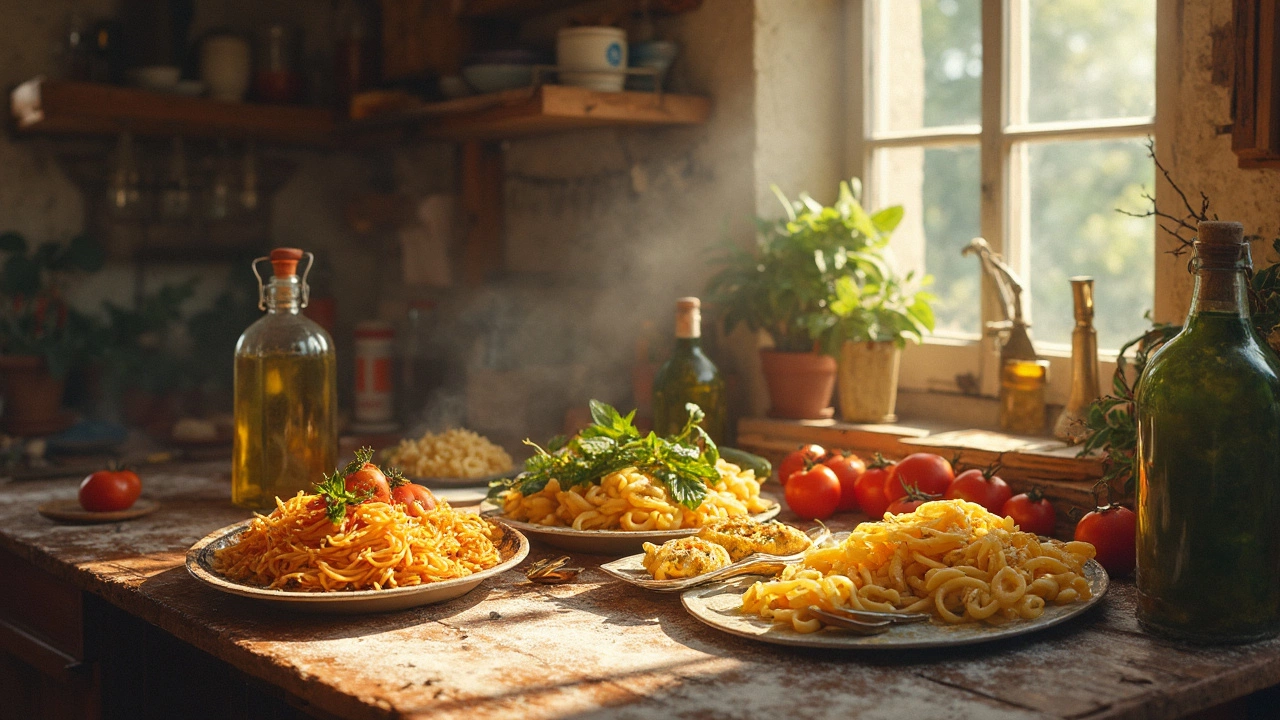Italian pasta: flavors, recipes, and tips
If you love twirling noodles around a fork, you’re in the right place. Italian pasta isn’t just a food – it’s a tradition that fits into any kitchen, whether you have five minutes or an entire afternoon. Below you’ll find practical ways to cook classic dishes, ideas for stepping out of the usual spaghetti, and a peek at the most obscure shapes you can actually find.
Everyday pasta favorites you can master today
Start with the basics. A good pot of water, a pinch of salt, and the right cooking time are the three pillars of any successful pasta meal. When the water’s boiling, add the pasta and stir once – that prevents clumping. Taste a piece a minute before the package time is up; you want it "al dente," firm but not crunchy. Drain, but keep a splash of the hot water. That starchy liquid helps the sauce cling without turning it watery.
One of the most beloved dishes is simple spaghetti with garlic, olive oil, and chili flakes – the classic aglio e olio. Heat two tablespoons of oil, toss in minced garlic until fragrant, add a pinch of chilies, then mix in the drained spaghetti. Finish with fresh parsley and a squeeze of lemon. It’s fast, cheap, and tastes like a seaside trattoria.
For a heartier option, try a quick tomato basil sauce. Sauté onion and garlic, add canned tomatoes, simmer, then stir in fresh basil at the end. Toss with penne or rigatoni, and you’ve got a comforting plate that feeds a family without breaking the bank.
Discovering rare Italian pasta
If you’re curious about the hidden gems of Italian cuisine, the post "Rarest Pasta in Italy" dives deep into shapes like trofie from Liguria or pappardelle di Gragnano. These noodles often come from small artisanal producers who still use bronze dies and slow drying methods. The result is a rough surface that grabs sauce like a magnet.
Got a chance to snag a bag of orecchiette from Puglia? Pair it with broccoli rabe, garlic, and a splash of anchovy oil. The tiny “little ears” hold the bitter greens perfectly, creating a balanced bite you won’t get with standard pasta. When you try something new, don’t be afraid to adjust the cooking time – rare shapes can be thicker or thinner than you expect.
Even if you can’t find these obscure noodles locally, many online stores ship them in small quantities. Keep them in a sealed container, and they’ll last months. Use them in recipes that call for a lot of sauce, because their texture loves to soak it up.
Whether you stick to familiar spaghetti or experiment with rare shapes, the key is simple: respect the pasta’s texture, use good quality sauce, and enjoy the process. Grab a pan, a pot, and your favorite noodle, and turn an ordinary dinner into a taste of Italy right at home.

What Pasta Do Italians Really Eat? Authentic Italian Pasta Types & Traditions
by Landon Weathers / 17 Jul 2025Ever wondered what pasta Italians actually eat? Dive deep into authentic Italian pasta types, regional dishes, and insider tips for the real taste of Italy.

The Four Must-Try Classic Italian Pasta Dishes and Their Secrets
by Landon Weathers / 3 Jul 2025Discover the four legendary Italian pasta dishes, their authentic recipes, quirky history, and smart tips for making them taste just like in Italy.



